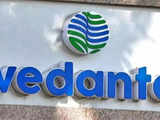Suggest a new Definition
Proposed definitions will be considered for inclusion in the Economictimes.com
What is 'ebitda'
EBITDA
EBITDA Definition
Earnings Before Interest, Taxes, Depreciation, and Amortisation, or EBITDA, is a statistic used to assess a company's operating performance. It is a proxy for the cash flow generated by its complete operations.
What is EBITDA?
EBITDA is a variant of operating income that removes non-operating and non-cash expenses. These deductions eliminate issues over which business owners have control, such as capital structure, depreciation techniques, debt financing, and taxes (to some extent). It can display a company's financial performance without considering its capital structure.
EBITDA focuses on a company's operational decisions because it examines the profitability of the company's core activities before accounting for capital structure, leverage, and non-cash expenses like depreciation.
It is not a recognised metric by the International Financial Reporting Standards (IFRS) or US GAAP. Several investors, such as Warren Buffet, despise this indicator since it fails to account for a company's asset depreciation. For example, if a corporation has a lot of depreciable equipment (and consequently a lot of depreciation expense), the cost of keeping and supporting these capital assets isn't recognised.
What is EBITDA Formula?
The formula for computing EBITDA is in the EBITDA Definition itself.
EBITDA = Net Income + Interest Expenses + Taxes + Depreciation and Amortization
or
EBITDA = Operating Profit + Depreciation and Amortization
What is the rationale behind the formulae?
Interest is not included in EBITDA because it is dependent on a company's financing structure. It is derived from the funds it has borrowed to fuel its operations. Various companies have different capital structures, which leads to varying interest costs. As a result, adding back interest and ignoring the influence of capital structure on the business makes it easier to assess the relative performance of organisations. Interest payments are tax-deductible. Thus firms can use this benefit to create a corporate tax shield.
Taxes differ by location and are dependent on the type of business. They result from tax restrictions that aren't particularly relevant to evaluating the effectiveness of a management team. Thus many financial analysts prefer to include them when comparing organisations.
Depreciation and amortisation (D&A) are based on the company's prior investments rather than its current operating performance. Companies put money into long-term fixed assets that depreciate over time. The depreciation expense is based on the deterioration of a portion of the company's tangible fixed assets. If the asset is intangible, an amortisation charge is incurred. Patents and other intangible assets are amortised because they have a finite useful life (competitive protection) before expiration.
Assumptions about usable economic life, salvage value, and the depreciation method are all highly influenced by D&A. As a result, analysts may discover that operating income differs from what they believe it should be, and D&A is omitted from the EBITDA calculation.
The D&A expense can be found under the cash from operational operations portion of the firm's cash flow statement. Because depreciation and amortisation are non-cash expenses, they are added to the cash flow statement (the expense is usually a positive amount).
Why EBITDA?
EBITDA is frequently seen as a cash flow proxy. Multiplying the EBITDA by a valuation multiple derived from industry transactions, stock research reports, or M&A can provide an analyst with a rapid estimate of the company's value and a valuation range.
Furthermore, investors might use EBITDA to assess the company if a company is not profitable. This statistic is widely used by private equity firms since it helps compare similar businesses in the same sector. Business owners use it to compare their performance with competitors.
What are the uses of EBITDA?
EBITDA can be used by companies in budgeting, valuations, and financial modelling. A brief insight on the application of EBITDA is discussed hereunder.
EBITDA in Valuation of Companies
Enterprise Value/EBITDA is a measure used to determine if for the overvaluation or undervaluation of a company when comparing two companies. Because different industries have widely varied average ratios, comparing comparable organisations is necessary. The measure is frequently used in business valuation.
EBITDA in Financial Modelling
In financial modelling, EBITDA is typically used as a starting point for estimating unlevered free flow of cash. Despite the fact that a financial model only assesses the business on the basis of its free flow of cash, earnings before interest, taxes, depreciation, and amortisation (EBITDA) is such a commonly used statistic in finance. It usually serves as a reference point.
What is the difference between EBIT and EBITDA?
EBIT means earnings (or net income/profit, which is the same thing) after deducting interest and taxes. EBIT can be determined on an income statement by starting with the Earnings Before Tax line and adding back any interest expenses the company may have incurred.
The income statement can make calculating EBITDA more difficult. Depreciation and amortisation might appear in multiple places on the income statement and require specific attention.
The Cash Flow Statement, where these expenses will be fully split out, is the quickest approach to guarantee that you have the total depreciation and amortisation statistics.
When to use EBIT and when to use EBITDA?
EBITDA can be a reasonable proxy for cash flow for a firm or industry with relatively minimal capital expenditures necessary to maintain operations.
On the other hand, EBITDA is a near-meaningless number for corporations in capital-intensive industries like oil and gas, mining, and infrastructure. Because of a large amount of capital spending necessary, EBITDA and cash flow will frequently be far apart. Because Depreciation and Amortisation capture a fraction of prior capital expenditures, EBIT may be a better choice in this scenario.
What are the arguments against EBITDA?
The primary argument against EBITDA is that it is not recognised as GAAP.
Besides this, EBITDA can be deceptive by not revealing the high debt levels and the company's liquidity position.
It is also deceptive as the Depreciation and Amortisation figures are not actual earnings of the company that can be used to pay off liabilities.
Disclaimer: This content is authored by an external agency. The views expressed here are that of the respective authors/ entities and do not represent the views of Economic Times (ET). ET does not guarantee, vouch for or endorse any of its contents nor is responsible for them in any manner whatsoever. Please take all steps necessary to ascertain that any information and content provided is correct, updated and verified. ET hereby disclaims any and all warranties, express or implied, relating to the report and any content therein.
EBITDA Definition
Earnings Before Interest, Taxes, Depreciation, and Amortisation, or EBITDA, is a statistic used to assess a company's operating performance. It is a proxy for the cash flow generated by its complete operations.
What is EBITDA?
EBITDA is a variant of operating income that removes non-operating and non-cash expenses. These deductions eliminate issues over which business owners have control, such as capital structure, depreciation techniques, debt financing, and taxes (to some extent). It can display a company's financial performance without considering its capital structure.
EBITDA focuses on a company's operational decisions because it examines the profitability of the company's core activities before accounting for capital structure, leverage, and non-cash expenses like depreciation.
It is not a recognised metric by the International Financial Reporting Standards (IFRS) or US GAAP. Several investors, such as Warren Buffet, despise this indicator since it fails to account for a company's asset depreciation. For example, if a corporation has a lot of depreciable equipment (and consequently a lot of depreciation expense), the cost of keeping and supporting these capital assets isn't recognised.
What is EBITDA Formula?
The formula for computing EBITDA is in the EBITDA Definition itself.
EBITDA = Net Income + Interest Expenses + Taxes + Depreciation and Amortization
or
EBITDA = Operating Profit + Depreciation and Amortization
What is the rationale behind the formulae?
Interest is not included in EBITDA because it is dependent on a company's financing structure. It is derived from the funds it has borrowed to fuel its operations. Various companies have different capital structures, which leads to varying interest costs. As a result, adding back interest and ignoring the influence of capital structure on the business makes it easier to assess the relative performance of organisations. Interest payments are tax-deductible. Thus firms can use this benefit to create a corporate tax shield.
Taxes differ by location and are dependent on the type of business. They result from tax restrictions that aren't particularly relevant to evaluating the effectiveness of a management team. Thus many financial analysts prefer to include them when comparing organisations.
Depreciation and amortisation (D&A) are based on the company's prior investments rather than its current operating performance. Companies put money into long-term fixed assets that depreciate over time. The depreciation expense is based on the deterioration of a portion of the company's tangible fixed assets. If the asset is intangible, an amortisation charge is incurred. Patents and other intangible assets are amortised because they have a finite useful life (competitive protection) before expiration.
Assumptions about usable economic life, salvage value, and the depreciation method are all highly influenced by D&A. As a result, analysts may discover that operating income differs from what they believe it should be, and D&A is omitted from the EBITDA calculation.
The D&A expense can be found under the cash from operational operations portion of the firm's cash flow statement. Because depreciation and amortisation are non-cash expenses, they are added to the cash flow statement (the expense is usually a positive amount).
Why EBITDA?
EBITDA is frequently seen as a cash flow proxy. Multiplying the EBITDA by a valuation multiple derived from industry transactions, stock research reports, or M&A can provide an analyst with a rapid estimate of the company's value and a valuation range.
Furthermore, investors might use EBITDA to assess the company if a company is not profitable. This statistic is widely used by private equity firms since it helps compare similar businesses in the same sector. Business owners use it to compare their performance with competitors.
What are the uses of EBITDA?
EBITDA can be used by companies in budgeting, valuations, and financial modelling. A brief insight on the application of EBITDA is discussed hereunder.
EBITDA in Valuation of Companies
Enterprise Value/EBITDA is a measure used to determine if for the overvaluation or undervaluation of a company when comparing two companies. Because different industries have widely varied average ratios, comparing comparable organisations is necessary. The measure is frequently used in business valuation.
EBITDA in Financial Modelling
In financial modelling, EBITDA is typically used as a starting point for estimating unlevered free flow of cash. Despite the fact that a financial model only assesses the business on the basis of its free flow of cash, earnings before interest, taxes, depreciation, and amortisation (EBITDA) is such a commonly used statistic in finance. It usually serves as a reference point.
What is the difference between EBIT and EBITDA?
EBIT means earnings (or net income/profit, which is the same thing) after deducting interest and taxes. EBIT can be determined on an income statement by starting with the Earnings Before Tax line and adding back any interest expenses the company may have incurred.
The income statement can make calculating EBITDA more difficult. Depreciation and amortisation might appear in multiple places on the income statement and require specific attention.
The Cash Flow Statement, where these expenses will be fully split out, is the quickest approach to guarantee that you have the total depreciation and amortisation statistics.
When to use EBIT and when to use EBITDA?
EBITDA can be a reasonable proxy for cash flow for a firm or industry with relatively minimal capital expenditures necessary to maintain operations.
On the other hand, EBITDA is a near-meaningless number for corporations in capital-intensive industries like oil and gas, mining, and infrastructure. Because of a large amount of capital spending necessary, EBITDA and cash flow will frequently be far apart. Because Depreciation and Amortisation capture a fraction of prior capital expenditures, EBIT may be a better choice in this scenario.
What are the arguments against EBITDA?
The primary argument against EBITDA is that it is not recognised as GAAP.
Besides this, EBITDA can be deceptive by not revealing the high debt levels and the company's liquidity position.
It is also deceptive as the Depreciation and Amortisation figures are not actual earnings of the company that can be used to pay off liabilities.
Disclaimer: This content is authored by an external agency. The views expressed here are that of the respective authors/ entities and do not represent the views of Economic Times (ET). ET does not guarantee, vouch for or endorse any of its contents nor is responsible for them in any manner whatsoever. Please take all steps necessary to ascertain that any information and content provided is correct, updated and verified. ET hereby disclaims any and all warranties, express or implied, relating to the report and any content therein.
Related News
 Ixigo Q4 Results: Net profit soars 55% YoY to Rs 7.34 croreLe Travenues Technology Ltd, the parent company of travel booking platform ixigo, on Thursday reported a 55.2 per cent growth in consolidated profit after tax (PAT) to Rs 7.34 crore in three months to March over the year-ago period. The company, which got listed on exchanges last month, had delivered a consolidated PAT of Rs 4.73 crore in the March quarter of FY23, according to a presentation.
Ixigo Q4 Results: Net profit soars 55% YoY to Rs 7.34 croreLe Travenues Technology Ltd, the parent company of travel booking platform ixigo, on Thursday reported a 55.2 per cent growth in consolidated profit after tax (PAT) to Rs 7.34 crore in three months to March over the year-ago period. The company, which got listed on exchanges last month, had delivered a consolidated PAT of Rs 4.73 crore in the March quarter of FY23, according to a presentation. Automakers take lead in FY24 salary hikes with double-digit raisesMost organisations that follow the April to March fiscal cycle hand out salary increments during April to July. About 84% of the companies surveyed by Deloitte have already doled out this year’s increment.
Automakers take lead in FY24 salary hikes with double-digit raisesMost organisations that follow the April to March fiscal cycle hand out salary increments during April to July. About 84% of the companies surveyed by Deloitte have already doled out this year’s increment. HCG acquires Vizag based cancer hospital for enterprise valuation of Rs 414 croreHCG, India's leading cancer care chain, acquired a majority stake in Visakhapatnam's Mahatma Gandhi Cancer Hospital for Rs 414 crore. The deal begins with a 51% ownership, aiming to complete 85% in 18 months. The hospital's FY24 revenue was Rs 120.2 crore with an EBITDA of Rs 42.2 crore, expected to boost HCG's annual EBITDA by Rs 3 per share and consolidate its position in the Vizag region.
HCG acquires Vizag based cancer hospital for enterprise valuation of Rs 414 croreHCG, India's leading cancer care chain, acquired a majority stake in Visakhapatnam's Mahatma Gandhi Cancer Hospital for Rs 414 crore. The deal begins with a 51% ownership, aiming to complete 85% in 18 months. The hospital's FY24 revenue was Rs 120.2 crore with an EBITDA of Rs 42.2 crore, expected to boost HCG's annual EBITDA by Rs 3 per share and consolidate its position in the Vizag region. MapmyIndia shares fall 6% after promoter likely offloads stakeShares of CE Info Systems-owned MapmyIndia fell by 6% to day’s low of Rs 2,271 on BSE after the company’s promoter Rakesh Verma reportedly offloaded equity stake via a block deal on Wednesday.
MapmyIndia shares fall 6% after promoter likely offloads stakeShares of CE Info Systems-owned MapmyIndia fell by 6% to day’s low of Rs 2,271 on BSE after the company’s promoter Rakesh Verma reportedly offloaded equity stake via a block deal on Wednesday. Adani at AGM: Well positioned to continue programmes with Modi govt now in third termWith the Modi-led National Democratic Alliance securing a third term, Gautam Adani, at Adani Enterprises' AGM, highlighted the group’s continued role in India’s growth. Adani addressed challenges from the Hindenburg controversy, emphasizing financial resilience and ambitious projects, including Mumbai’s Dharavi redevelopment. He projected India becoming the world's third-largest economy by decade's end.
Adani at AGM: Well positioned to continue programmes with Modi govt now in third termWith the Modi-led National Democratic Alliance securing a third term, Gautam Adani, at Adani Enterprises' AGM, highlighted the group’s continued role in India’s growth. Adani addressed challenges from the Hindenburg controversy, emphasizing financial resilience and ambitious projects, including Mumbai’s Dharavi redevelopment. He projected India becoming the world's third-largest economy by decade's end. VRL Logistics outlook: Should you buy this stock? Know why analysts are bullish on this stockVRL Logistics: Analysts are confident about VRL Logistics due to its aggressive expansion and investment plans, and the promising outlook of the logistics industry. The buoyant prospects of logistics industry will continue to support the company’s growth. The company has multiple differentiators to sustain its growth momentum. An Emkay May 2024 report states that its business model will help reap benefits of operating leverage due to owned assets and branch expansion plans.
VRL Logistics outlook: Should you buy this stock? Know why analysts are bullish on this stockVRL Logistics: Analysts are confident about VRL Logistics due to its aggressive expansion and investment plans, and the promising outlook of the logistics industry. The buoyant prospects of logistics industry will continue to support the company’s growth. The company has multiple differentiators to sustain its growth momentum. An Emkay May 2024 report states that its business model will help reap benefits of operating leverage due to owned assets and branch expansion plans. MapMyIndia shares rally 37% in 2 days. Here's why Goldman recommended this stockCE Info Systems shares surged 37% on BSE in response to a 'buy' rating from Goldman Sachs, targeting Rs 2,800.
MapMyIndia shares rally 37% in 2 days. Here's why Goldman recommended this stockCE Info Systems shares surged 37% on BSE in response to a 'buy' rating from Goldman Sachs, targeting Rs 2,800. We are anticipating steady growth from Sunshine units every quarter: Dr B Bhaskar Rao, KIMS HospitalsThe aging population is increasing, leading to more disease-prone individuals. Per million, the number of people getting sick is rising, which we can accommodate. Additionally, advancements in science and new therapies are reducing the need for surgical procedures, making interventions more common.
We are anticipating steady growth from Sunshine units every quarter: Dr B Bhaskar Rao, KIMS HospitalsThe aging population is increasing, leading to more disease-prone individuals. Per million, the number of people getting sick is rising, which we can accommodate. Additionally, advancements in science and new therapies are reducing the need for surgical procedures, making interventions more common. Brokerages raise price targets of Vedanta citing multiple positivesThe average of revised price targets given by the six brokerages and research firms such as Nuvama, Phillip Capital, IIFL, CLSA, Motilal Oswal Financial Services and Investec, is Rs 536, indicating a 19% upside over Vedanta's closing price of Rs 450.
Brokerages raise price targets of Vedanta citing multiple positivesThe average of revised price targets given by the six brokerages and research firms such as Nuvama, Phillip Capital, IIFL, CLSA, Motilal Oswal Financial Services and Investec, is Rs 536, indicating a 19% upside over Vedanta's closing price of Rs 450. Vedanta sees sale of steel operations by October, to spend $1.9 billion on capexThe plan to divest the steel business is a part of the company’s efforts to cut debt, Agarwal said in the company’s annual report for 2023-24 (Apr-Mar). At holding company Vedanta Resources, debt has been cut by $3.7 billion in two years, as against the company’s commitment of bringing it down by $4 billion. “We seek to further deleverage Vedanta Resources by US$ 3 billion over the next three years,” he reiterated.
Vedanta sees sale of steel operations by October, to spend $1.9 billion on capexThe plan to divest the steel business is a part of the company’s efforts to cut debt, Agarwal said in the company’s annual report for 2023-24 (Apr-Mar). At holding company Vedanta Resources, debt has been cut by $3.7 billion in two years, as against the company’s commitment of bringing it down by $4 billion. “We seek to further deleverage Vedanta Resources by US$ 3 billion over the next three years,” he reiterated.
Load More